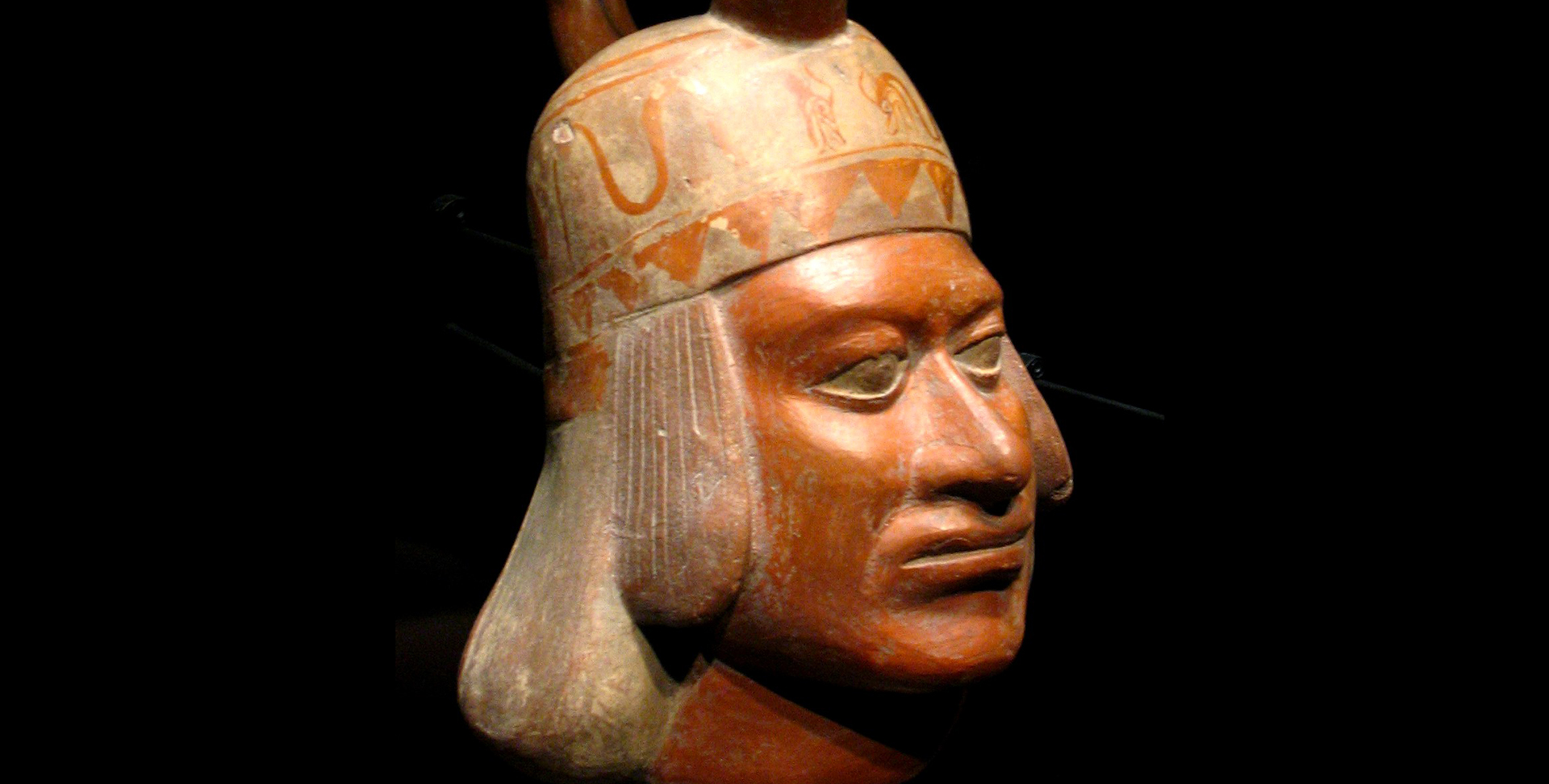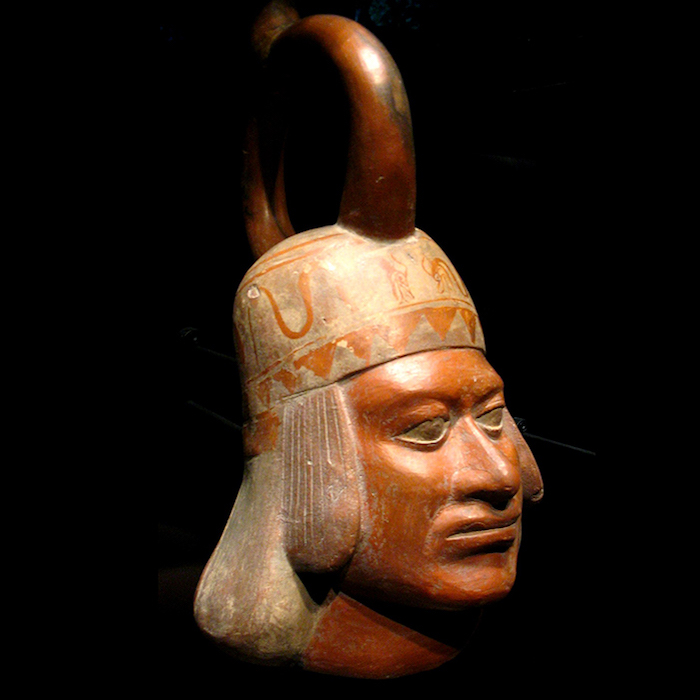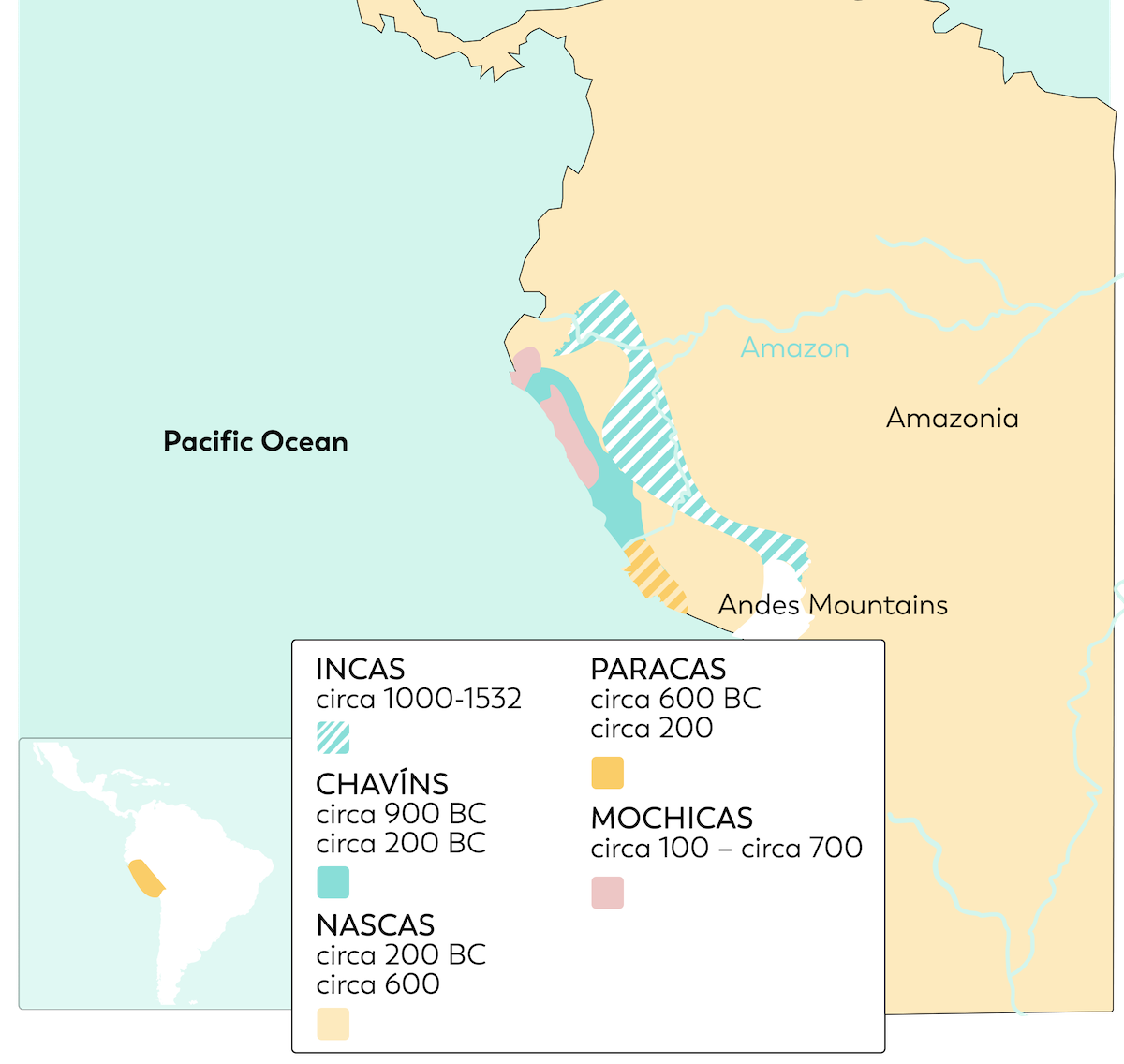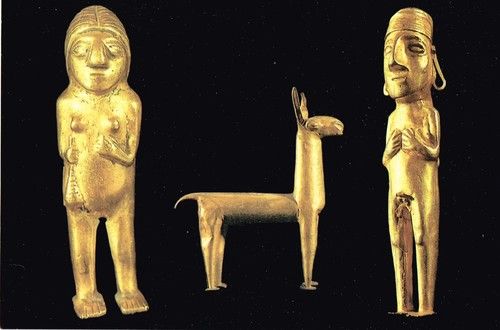



The Andes Mountain chain is located south of Mesoamerica. This mountain chain, which crosses South America, gave its name to the Andes region, in which many civilisations developed.

The Andes region, which owes its name to the Andes Chain, was the birthplace of numerous civilisations, such as the Incas or the Paracas.
Like Mesoamerica, with the Olmecs, the Andes region also has its mother civilization, the Chavín culture, which laid the foundations for all those that followed.
The “stirrup vases” found amongst the Chavín people are an example of this: their shape would reappear later in most of the Andean civilisations.

The mother civilisation of the Andean region is the Chavín culture.
The Nasca culture developed not long after the Chavíns. It was famous for its huge drawings traced on the ground in the middle of the desert and known as geoglyphs.
Nothing could have been simpler than to create them! All that was needed was to remove the upper layer of rock from the ground so that another could appear… over several hundred metres, all the same.
There are many theories on the role of these impressive drawings, and they are sometimes outlandish, referring to underground water courses and sacred sites where ritual ceremonies were carried out, or flying saucer landing strips – the choice is yours!

The Nasca culture was especially known for its geoglyphs, which were huge drawings across several hundred metres.

Towards 1200 the Incas, in turn, made their appearance, founding their capital, Cusco, in a valley in the Andes Mountain Chain. Some ruins are still visible today, as its buildings have resisted earthquakes, volcanic eruptions and even (in some cases) the Spanish invasion.
Inca buildings are so sound because of a very specific construction technique: “interlocking stone walls”. Each block of stone was finely sand-polished to interlock perfectly with the surrounding stones and no mortar was even required.
This stone is the most famous in Cusco: and surrounded by eleven others!


The Inca capital, Cusco, withstood the ravages of time thanks to the construction technique of interlocking stone walls.
Let’s take a look now at the deities revered by the Incas.

The main Inca deities were Viracocha and Inti.
These deities were revered in Cusco, on the most sacred site in the Inca empire: Coricancha. Six temples were built here, their walls covered with gold, with a fountain and golden statues, and even a field of corn made from gold. Inside, mummies of Inca monarchs were enthroned in their last resting place, on golden thrones, of course!
Unfortunately, Coricancha did not survive the arrival of the Spanish conquerors. It was pillaged then razed to the ground and the site became a convent – only its foundations are still visible today.


Coricancha was an important sacred Inca site, where everything was completely covered with gold.
From the 16th century onwards, all this gold attracted European interest. Unlike them, the Andean populations did not attribute any monetary value to this metal.
In their country, it was a sacred metal, because its shiny colour was a reflection of the planet Sun. The Incas even thought that the sun sweated it.
des, gold was a symbol of power, providing a link between men and the divinities, which explains its massive presence on the sacred sites!


For the cultures of the Andes, gold was not a currency, but a sacred metal and a symbol of power.

"*" indicates required fields